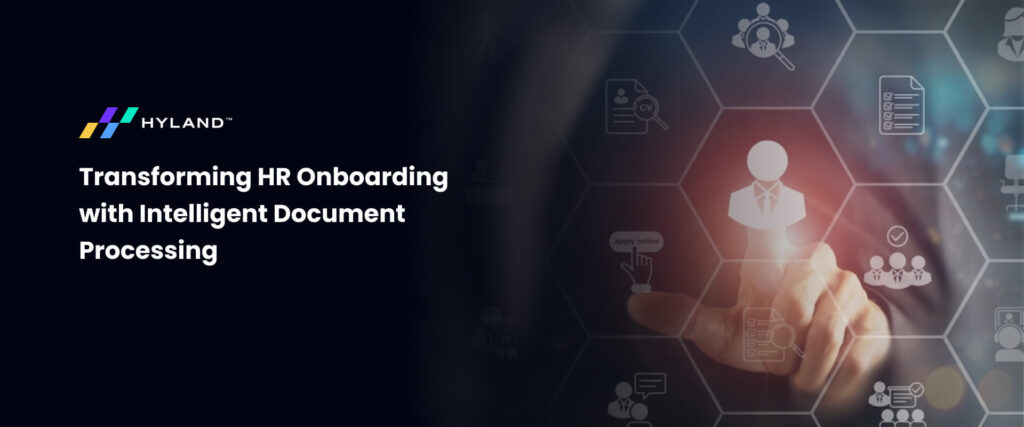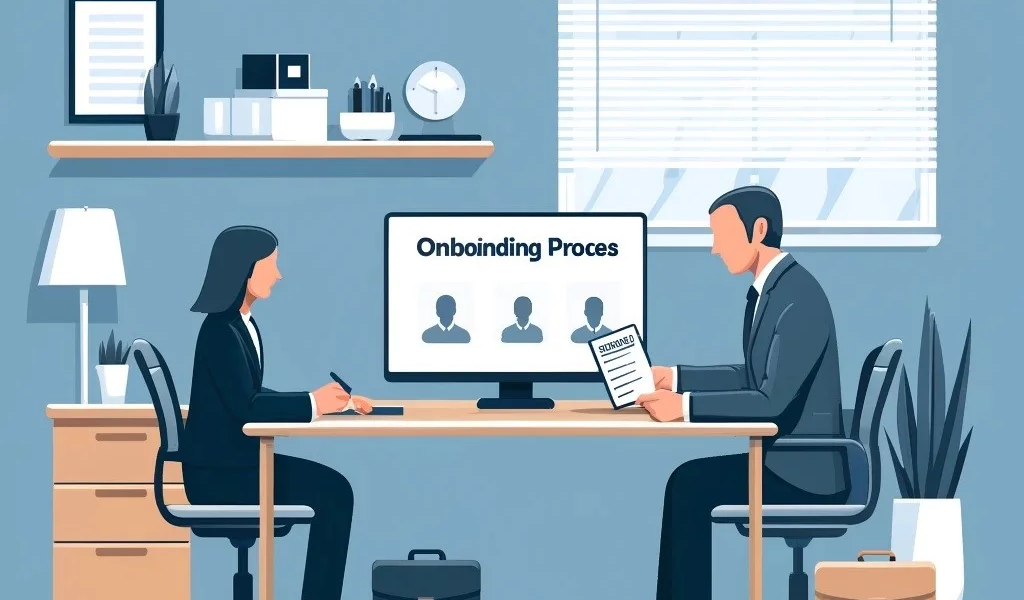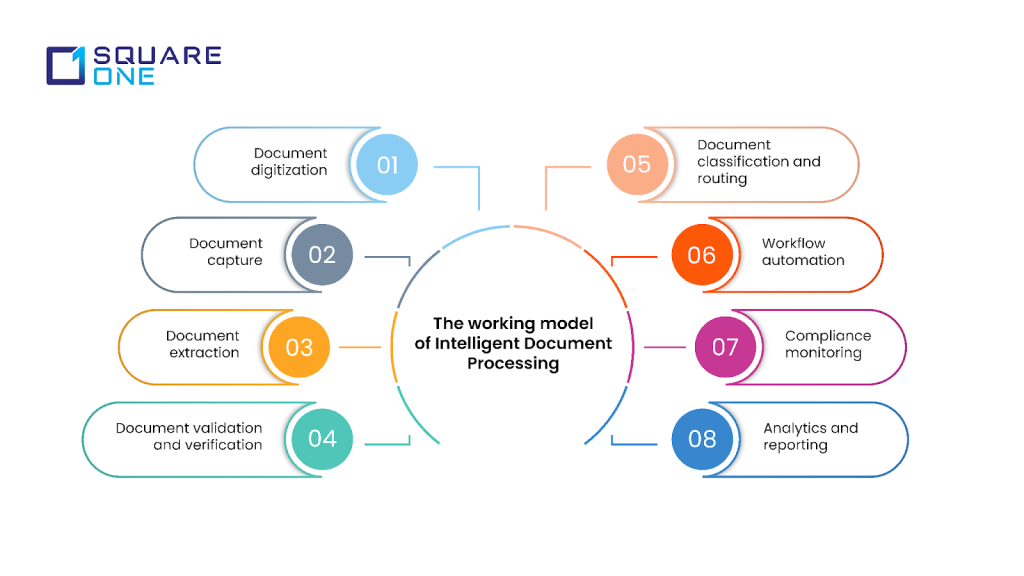
Having a seamless onboarding process is the first impression for employees taking their first day at an organization. A clumsy and messy procedure can never do anything better, other than prolong the time duration for both the organization and the employee. It is understandable that the human resources department is the most loaded department with applications, documents, resumes, and other paper-based slips. With so many documents to analyze and evaluate, the right talent acquisition can be overseen, leading to a costly miss. This needs to be transformed so that HR and other professionals can gain access to the employee profile in one click, validate their role and experience with the vacancy position, and then proceed further. This way, organizations can not just save time and effort but also focus on the strategic concepts of talent acquisition and other administrations.

To support HRs in handling the vast amount of data and expedite the onboarding process, Intelligent Document Processing (IDP) software has come into play. The software provides support by intelligently scanning information, extracting data, categorizing it in accordance with certain criteria, and validating it against predefined content. Thus, assisting HRs with a seamless and effortless recruitment process ensures a consistent approach to managing and keeping employee documents and other data in place.
This blog will illuminate the role of IDP solutions for the HR community in enhancing and accelerating the onboarding process. It will also address future trends in IDP and how it further streamlines the process.
IDP: An Overview of Its Working Model
Let’s analyze the working model of IDP to gain a clear understanding of its features and benefits.

- Document Digitization
As a first step, it is essential to digitize all paper-based documents like resumes, applications, contracts, and salary slips in the HR cabin. By using scanning devices or image capture technology, the software replicates every aspect of the paper-based documents into a digital image. This is done for an easy approach to transforming documents into digital formats.
- Document Capture
Once the documents have been digitized, i.e., converted to an image file, it is now time to decipher the image into machine readable format. IDP employs Optical Character Recognition (OCR) to recognize, analyze and interpret individual characters, words and sentences from the image file into a format that can be well-read and recognized by the system.
- Data Extraction
After capturing data and images, Intelligent Document Processing solution sets out to extract relevant data and information that are necessary to further proceed with employee selection. This involves parsing through text, identifying patterns, and recognizing key elements based on predefined criteria and templates that help with retrieving details like
- Profile summary
- Previous work experience
- Educational Qualification
- Languages
- Skills and expertise
- Data Validation and Verification
The obtained data is then cross-referenced with external databases for completeness, accuracy, and consistency. The IDP software also compares data with external databases, like validating employee eligibility against government portals. It also validates using pre-defined rules and algorithms, which help organizations maintain consistency and flag discrepancies in the event of any mismatch. This way, HRs can stay alert for new hires before recruiting or onboarding them.
- Document Classification and Routing
After all of the analysis and validation, it is time to categorize the document according to its content, and IDP’s machine learning algorithms and natural language processing techniques help with this. All documents related to the HR department are classified into four categories: resumes, compliance, tax forms, and contracts. This empowers organizations to stay aware of where each document is saved.
- Workflow Automation
Having the ability to integrate IDP with various HR applications like Human Resource Management Systems (HRMS), Applicant Tracking Systems (ATS), and payroll software ensures a smooth flow of data between IDP and HR applications. After data capture and validation, the IDP ensures the extracted data is automatically populated into relevant fields in the HR software. For example,
- Personal information of employees, like D.O.B. and marital status, are entered in the employee record
- Details like work histories and educational qualifications are populated directly in the applicant tracking system
- Taxes and other compliance related information are updated in the payroll software.
The integration also helps notify HRs about pending tasks, routes documents for approval, and includes mechanisms for handling exceptions and errors. This way, organizations can keep track of every employee, new hire and other details, thereby accelerating the onboarding process and assisting HR to focus on strategic alliances.
- Compliance Monitoring
Ensuring regulatory adherence and compliance checks for the extracted data is important, for any deviation from the latest standards may lead to penalties or regulatory fines. IDP solution makes sure that every document or piece of data processed is subject to strict guidelines by identifying and flagging inconsistencies. For example, any mismatched details between an employee identification document and an application are identified and alerted to the respective HR. It also helps with identifying missing data from documents like I-9 forms, tax applications, and other critical papers. Thus, leveraging IDP helps organizations maintain HR onboarding processes and stay aligned with the latest regulations and compliance measures.
- Analytics and Reporting
As a final step, it is crucial to learn about the metrics and measures of the onboarding process. IDP solution provides real-time insights into the number of applications received, the average processing time per document, and the status of pending tasks. This helps HRs stay aware of the onboarding process as it happens. With real-time dashboards, key metrics like average time taken to hire, approval cycle-time, and error rates occurring during document processing are well displayed in graphs and charts, enabling the HR team to easily interpret insights like identifying bottlenecks, addressing areas for improvement, and strategizing for acquisition. Thus, the insights derived from IDP analytics and reporting support data-driven decisions about the number of new hires required, resource allocation, and other planning that accelerate the onboarding process.
Overall, the IDP working model presents an efficient and enhanced workflow approach for the HR community, which is struggling to streamline, monitor, track, and accelerate the onboarding process.
Top Functionalities of Intelligent Document Processing
So, how does IDP solution do all this? It is time to analyze its features, the cornerstone of its performance and operation, with such accuracy and efficiency.
Powered by AI
Leveraging AI has helped IDP analyze and understand past data, scenarios, patterns, and trends to predict and automate future tasks. This enhances its ability to adapt to new and varied document types and formats and adjusts its processing strategies accordingly. The integration of AI has also helped with automating repetitive tasks, real-time identification of bottlenecks and reducing costly correction and compliance issues. AI-powered IDP thus transforms the HR onboarding process into a seamless approach with greater efficiency and accuracy.
User-Friendly Interface
Creating customized workflows for the onboarding process encompassing all necessary steps, right from collecting resumes to issuing approval letters, is automated and straightforward. If there are any changes in existing requirements or edits to the organization’s policy, modifications can be easily made by the HR team, leading to a more efficient and error-free onboarding process. The intuitive interface also assists the HR team in creating customizable templates, protecting sensitive and confidential information, and integrating with existing systems. This way, the HR community can simplify the onboarding process so that it is more inclusive and manageable from anywhere and anytime.
OCR Technology
Recognizing text in various formats and digitizing them, ensuring all details are covered accurately, is achieved with the help of IDP’s OCR engine. It also helps with automating the capture and populating the respective field with the extracted information in real-time, reducing the need for manual intervention. Thus offering a more rapid and efficient onboarding process for HRs struggling to separate documents, enter data and then process the approval letter.
Highly Scalable and Flexible
IDP’s scalable and flexible architecture efficiently processes large volumes of documents during mass hiring. As a low-code, no-code platform, IDP assists HRs in creating, modifying, and accessing templates and workflows per requirement. This way, organizations can easily handle the growing document flow, workload process, and recruitment applications without compromising efficiency or performance.
In essence, the flexible and intuitive features of IDP are what truly transform the HR onboarding process, making it more advanced and convenient for the HR community to capture, process, and digitize documents.
What’s Next for IDP?
Before we conclude, let’s find out the emerging trends in IDP for HR that will revolutionize the onboarding process, enabling more strategic decision-making from recruitment to long-term employee retention
Predictive Hiring Analytics
How it Works: By comparing historical data with current candidate information, AI can predict the likelihood of the candidate’s association with the organization.
Benefit: Helps HR with predictive and informed decisions that are not available through manual hiring.
Automated Candidate Evaluation
How it Works: Analyze candidate information from all related and relevant documents to assess employee fit across qualifications, work experience, and work culture.
Benefit: Accelerate the hiring process and promote an unbiased recruitment decision.
Employee Performance Prediction
How it Works: Predictive analytics can forecast employees’ potential and future performance by evaluating candidate data from onboarding, training, and workshop days.
Benefit: Assists HR in tailoring development programs and career paths for high-potential employees, improving employee satisfaction and retention.
SquareOne Technologies: Leading the Way in Digital Transformation for All Sectors
As a leading digital transformation company, SquareOne is dedicated to revolutionizing business operations for numerous organizations. As a distinguished partner of Hyland, SquareOne stands out as a reliable provider of intelligent document processing solutions, especially for optimizing HR onboarding processes. With expert guidance and in-depth knowledge of IDP, SquareOne ensures seamless and efficient onboarding, allowing HR teams to focus on talent acquisition and strategic decisions. Embracing innovative solutions that enhance productivity, compliance, and customer satisfaction is crucial in today’s digital landscape.
Begin your digital transformation journey with SquareOne Technologies by booking a demo today!
Conclusion
In conclusion, hiring and retaining candidates may seem like a small part of an organizational operation, but its significance is immense, as employees are the backbone of the company. Therefore, it’s crucial to have a seamless and straightforward approach for HR teams to capture candidate details, evaluate potential, and cross-check information. The introduction of IDP has become increasingly popular among large organizations, providing HR and recruiting professionals with a user-friendly, scalable, no-code platform to monitor and track candidate details in real-time, leading to a hassle-free recruitment process. SquareOne’s partnership with Hyland presents an extensive suite of offerings for businesses looking to accelerate the onboarding process and intelligently conduct recruitment that is seamless and efficient for the HR community. Get in touch with experts! Why delay? when you can do it today!


















